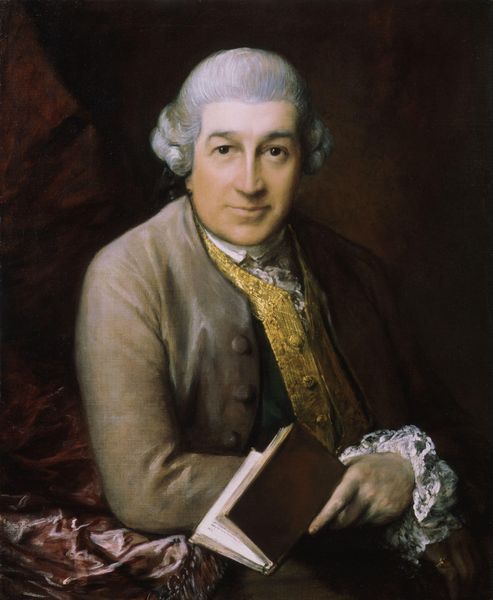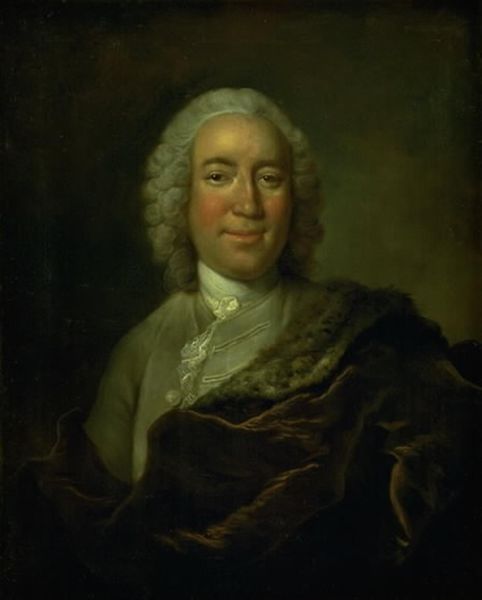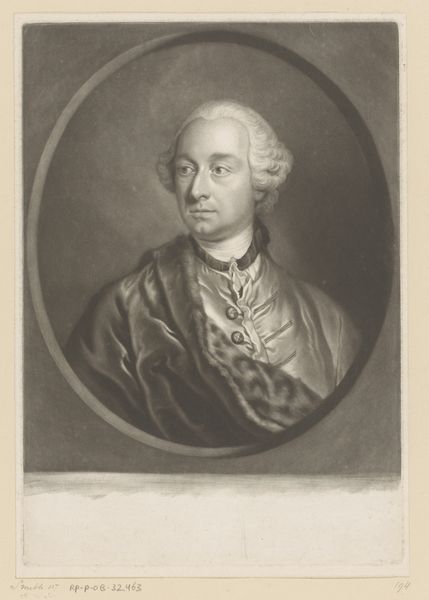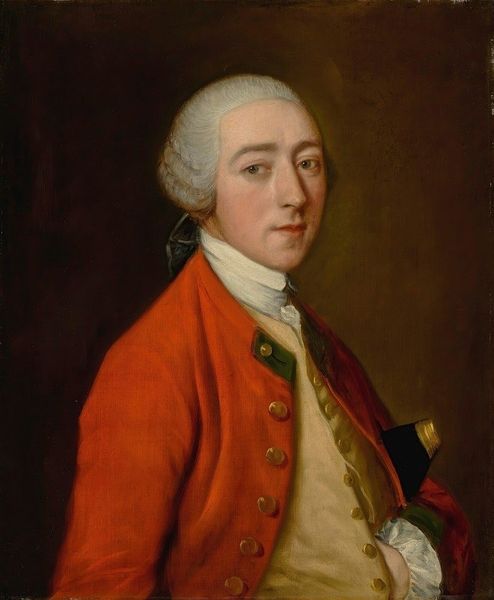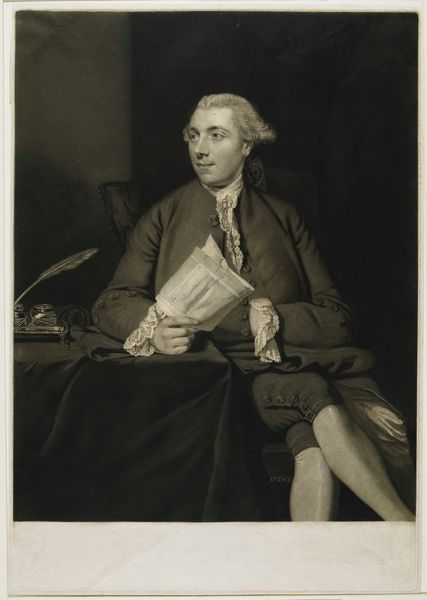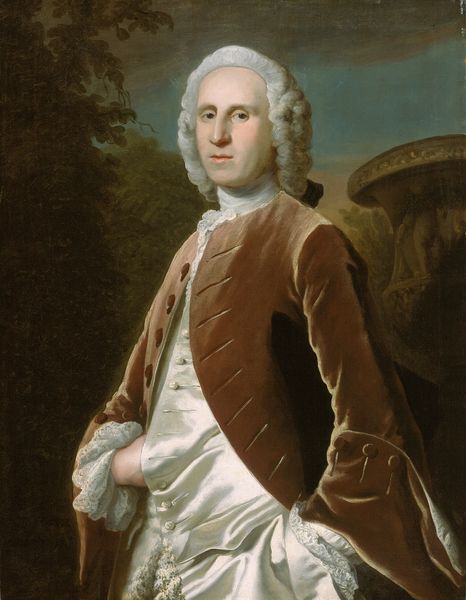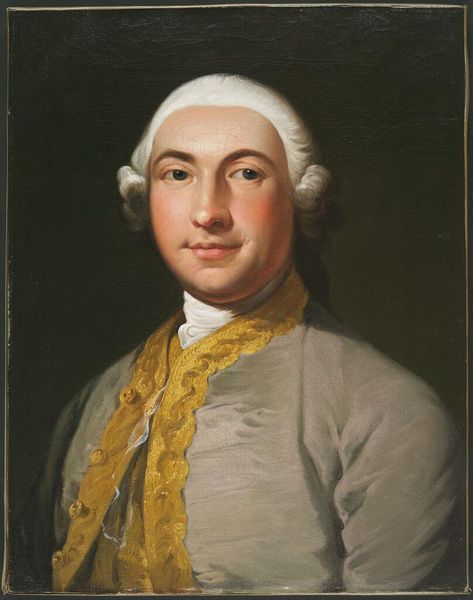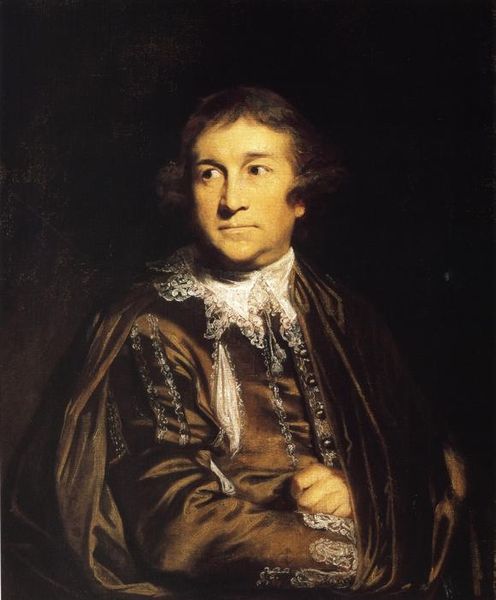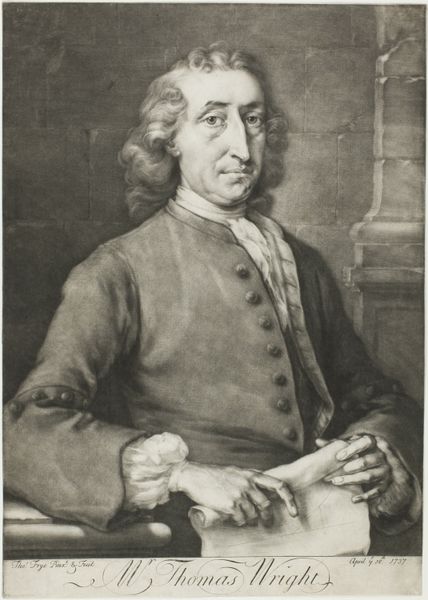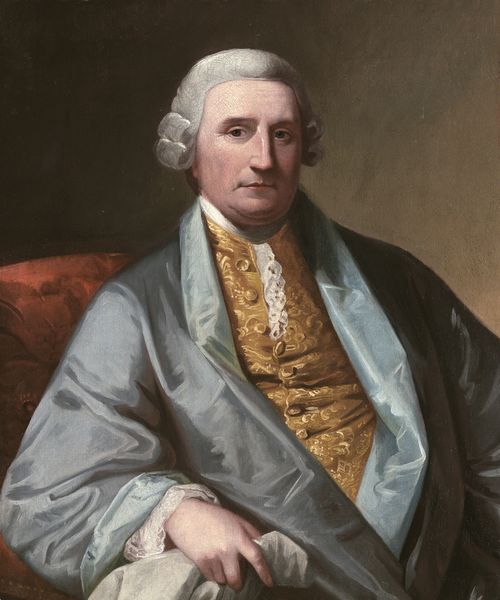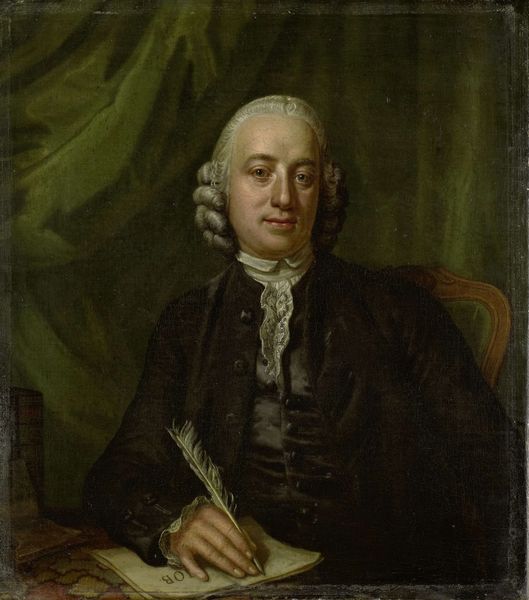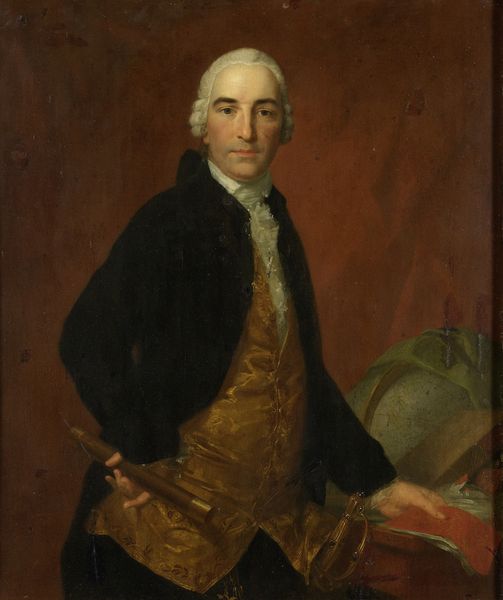
Portrait of Francesco Guardi 1760
0:00
0:00
pietrolonghi
Ca' Rezzonico (Museo del Settecento), Venice, Italy
painting, oil-paint
#
portrait
#
painting
#
oil-paint
#
figuration
#
rococo
Copyright: Public domain
Curator: This is Pietro Longhi’s “Portrait of Francesco Guardi,” painted around 1760. What strikes you most about it? Editor: The muted palette, almost monochromatic, emphasizes the materiality of the sitter's painterly craft. The way Longhi rendered Guardi’s painter’s smock seems less about luxurious fabric and more about functional work wear. Curator: It's interesting you notice the utilitarian aspect of his clothing. The choice of such understated garments, absent the trappings of Venetian aristocracy, can be viewed as a deliberate statement of Guardi's identity as an artist, placing him in contrast to more traditionally celebrated patrons of the arts during the Rococo era. Editor: Absolutely. Longhi's brushwork focuses on the signs of artistic labor—the pigment smeared across his palette, the slender brush, and that functional robe that seems to protect him from the creative mess. The muted Rococo color story highlights, by omission, a sense of production itself. Curator: Indeed, and perhaps it invites us to reconsider the conventional relationship between artist and patron. By depicting Guardi in this way, Longhi perhaps subtly undermines the power structures inherent within the art world of 18th century Venice, positing the artist as an autonomous creative force rather than a mere commodity. The artist is foregrounded and centered here, both figuratively and literally. Editor: The somber hues against the presumed frivolity of the Rococo moment draw us toward understanding this Guardi not as some kind of outlier or some rebellious, free-thinking artiste, but as someone intimately involved with the stuff that actually constitutes the work. What makes a painter a painter? Curator: Precisely. The portrayal certainly raises questions about how artists navigate their identities amidst prevailing societal expectations, especially when considering art's complicated history. I can’t help but reflect on today’s ongoing struggles of artists who struggle with fair compensation for their work and recognition of the social impact of their practices. Editor: Exactly, examining Longhi's choices—materials and artistic emphasis—provides a means for grasping that bigger picture of labor's value, even centuries later. Curator: A remarkable insight, allowing us to perceive echoes of these earlier conversations on contemporary dialogues related to art, agency, and power. Editor: It's all in the surface—the oil on canvas speaks volumes.
Comments
No comments
Be the first to comment and join the conversation on the ultimate creative platform.
